|
McCloud River Lumber Company:
Truck Logging |
|
|
|
Log trucks started appearing in the logging industry in the early 1900s. Loggers generally found trucks to be more flexible and cheaper than railroads, as their roads
didn't require near the same level of engineering or earthwork. Unlike railroads, trucks could be driven and loaded almost anywhere, and though railroads were and are far more efficient at moving large quantites
of logs long distances that alone could not overcome the advantages of trucks. The nature of the logging industry also changed as trucks came into use, as loggers moved away from the large landscape scale clearcuts
practiced up until then to selective stand thinning or smaller patchwork clearcuts that resulted in the same volumes of timber being harvested from much larger areas, which also played to the advantages of trucks. The McCloud River Lumber Company purchased its first trucks by 1950, four tractor cabs and dual axle trailers. Trucks played rapidly increasing roles in company logging activites through the next several years. Similar many other operations already operating large railroad operations, the McCloud River company quickly phased out most of its spur line logging railroads in favor of using trucks to haul logs from the woods to centrally located reloads on a railroad mainline. Some trucks working on harvest operations closer to McCloud delivered logs directly to the McCloud mill, but on the whole the company used trucks to feed logs to the railroad up until the time U.S. Plywood took over. U.S. Plywood almost immediately shut the logging railroad down and shifted the McCloud operations to entirely truck logging. |
|
|
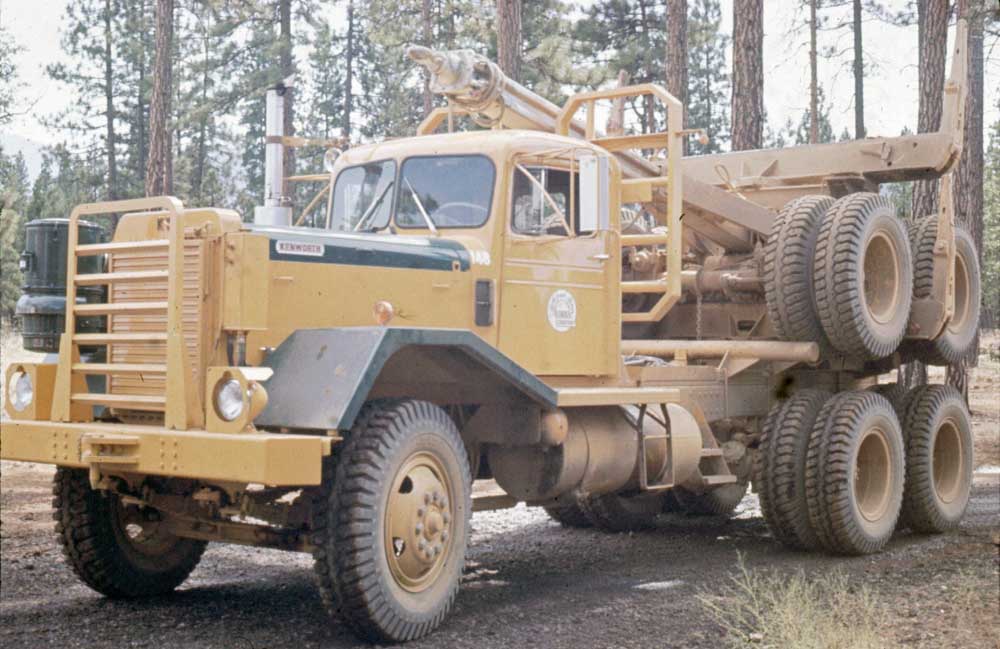 |
|
McCloud River Lumber Company initially purchased these large off-road log trucks. Dennis Sullivan collection.
|
|
|
 |
|
A typical load on one of these off-road trucks. Dennis Sullivan collection.
|
|
|
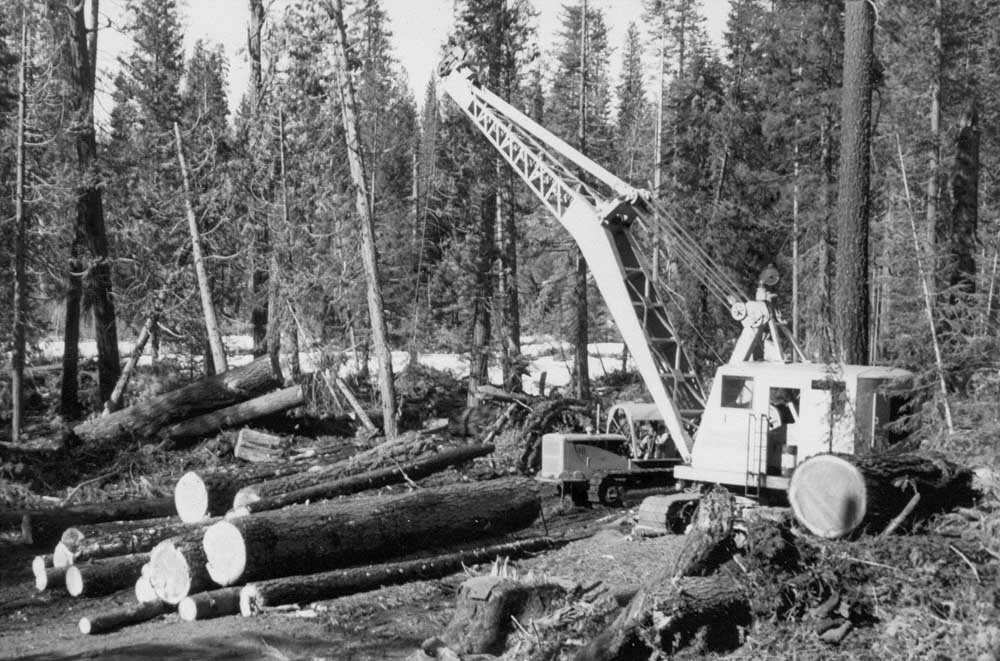 |
|
The first loader the lumber company purchased specifically for truck logging, a Washington Iron Works TL15. Scott Dowell collection.
|
|
|
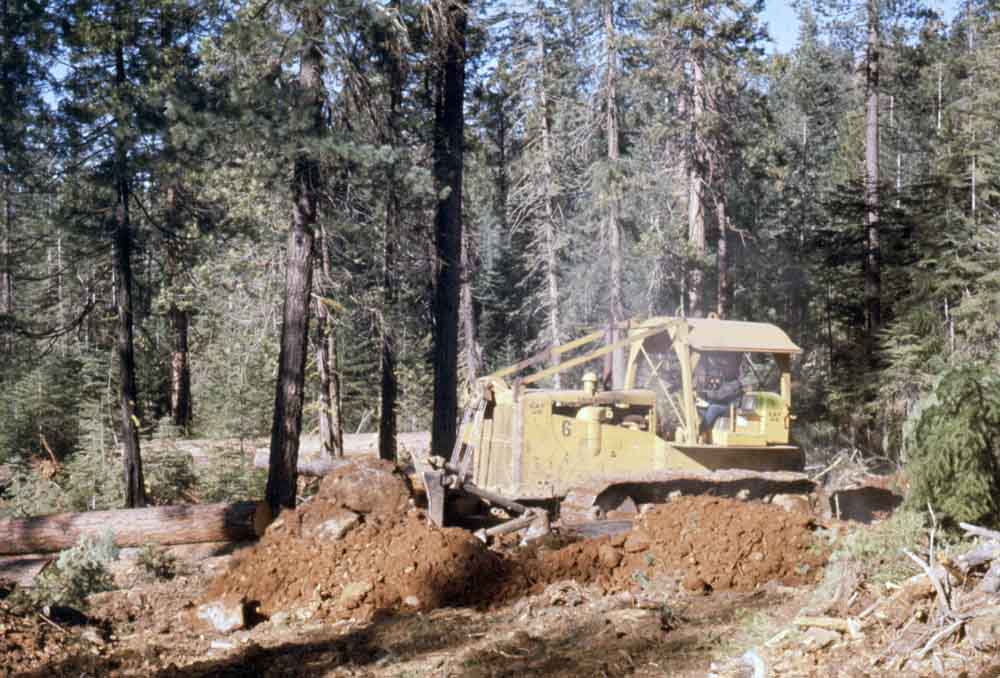 |
|
A bulldozer building a truck road in the Burney tract. Dennis Sullivan collection.
|
|
|
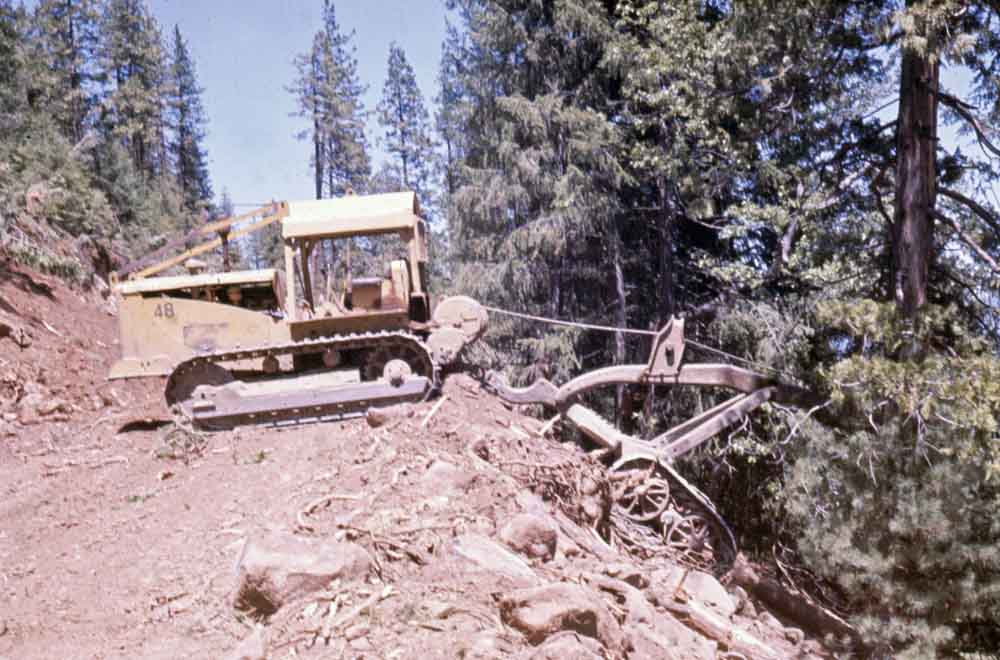 |
|
A tractor and a logging arch retrieving logs from a steep hillside in the Burney tract. Dennis Sullivan collection.
|
|
|
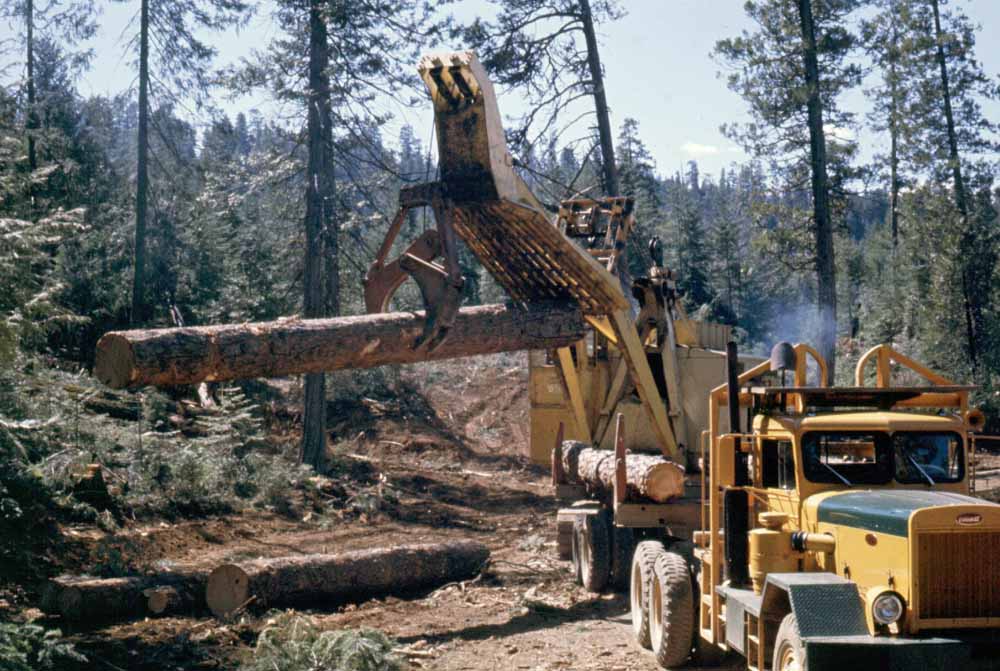 |
|
Much like in rail logging, the tractors and arches would drag the logs into a landing, but in this case one of the new truck loaders placed the logs on trucks for the trip to the railroad.
Dennis Sullivan collection.
|
|
|
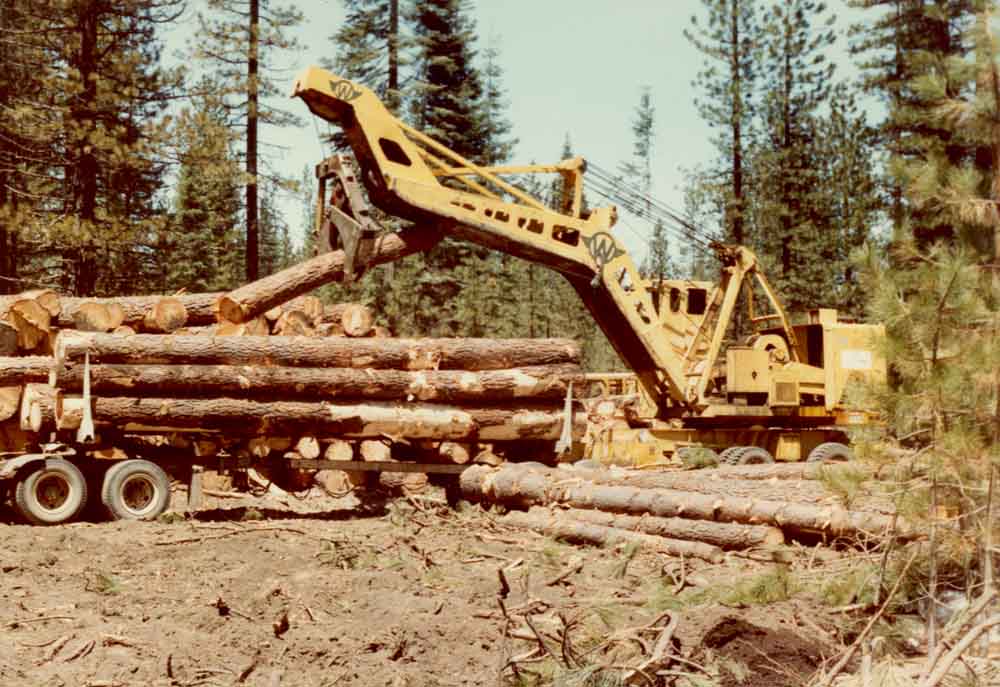 |
|
Another shot of a truck loader at work. Dennis Sullivan collection.
|
|
|
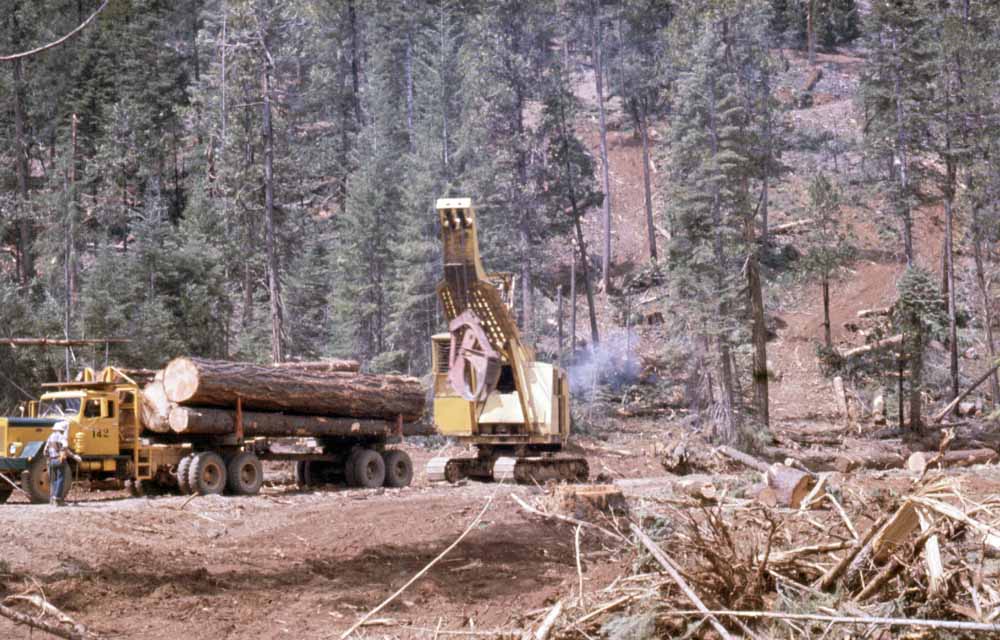 |
|
A broader view of a truck landing in the Burney tract. Dennis Sullivan collection.
|
|
|
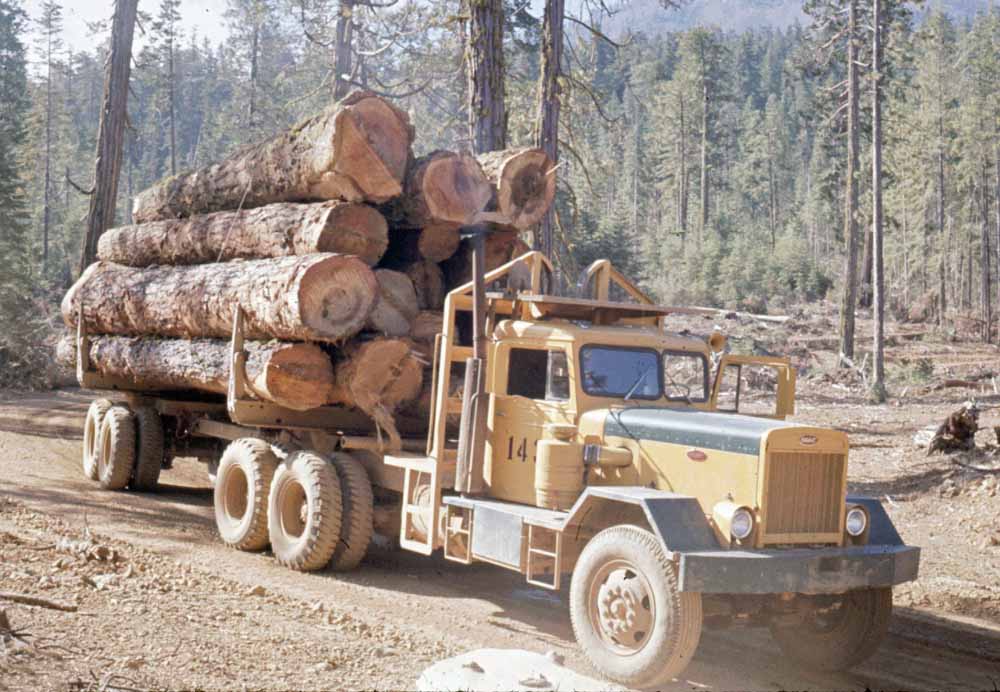 |
|
Another loaded truck leaving a landing in the Burney tract on the way to the railroad reload. Dennis Sullivan collection.
|
|
|
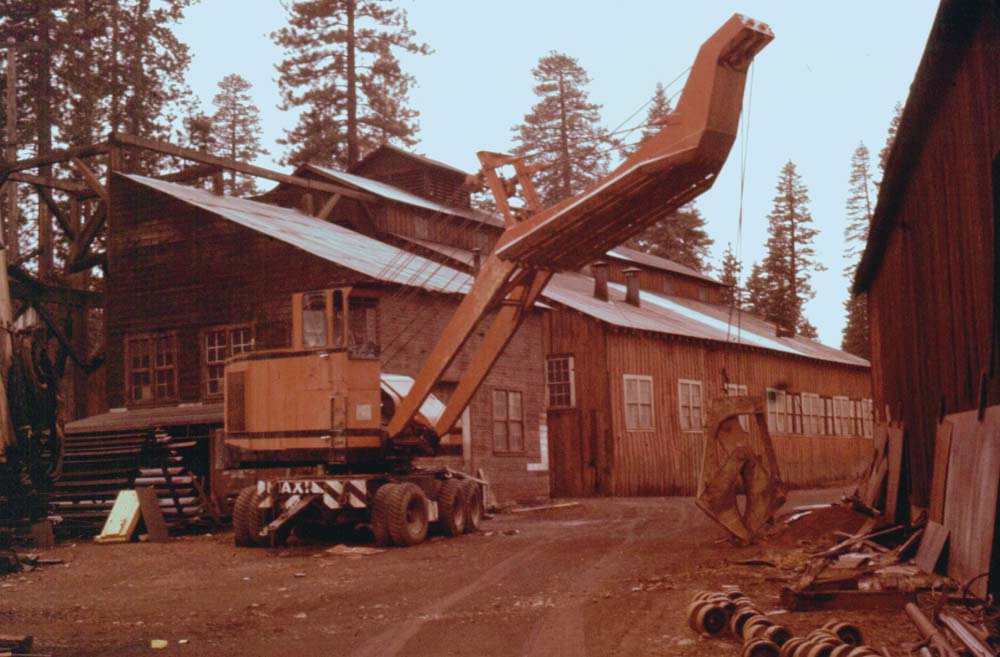 |
|
A truck loader in Pondosa, between the shop building at the left and the old enginehouse just visible to the right. Dennis Sullivan collection.
|
|
|
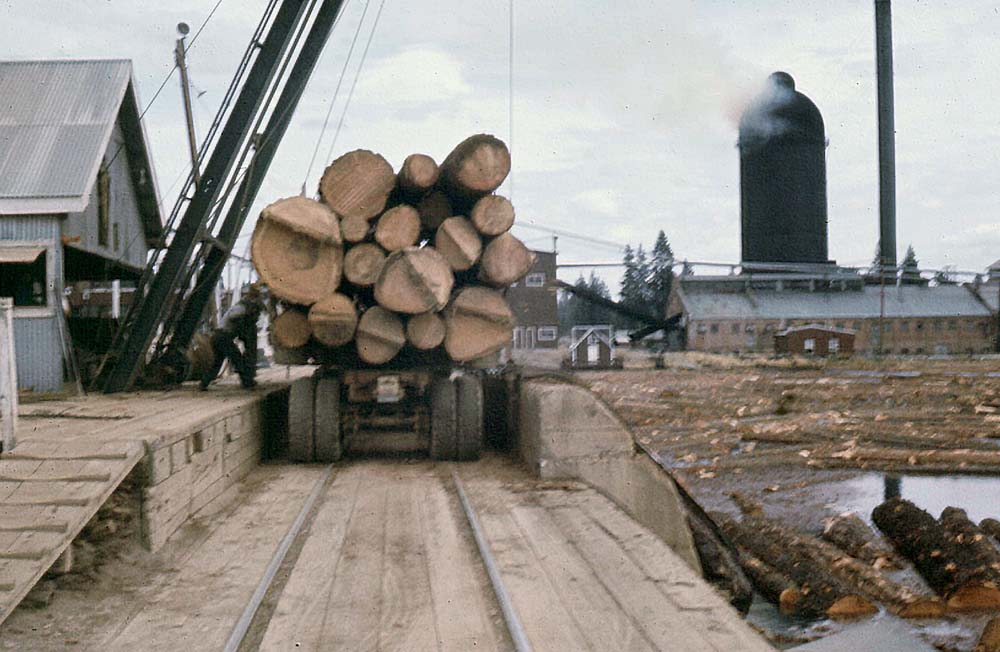 |
|
Trucks at the log dump in McCloud. Trucks and trains shared the log dump for most of the '50s and early '60s. Trains had priorities at the dump, but there were periodic conflicts when
impatient truck drives squeezed into the dump just ahead of approaching trains. Dennis Sullivan collection.
|
|
|